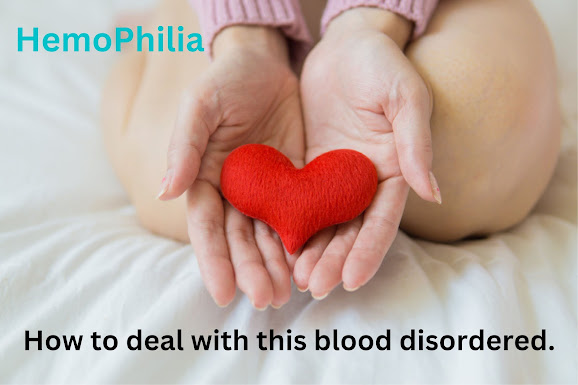What is Hemophilia: Top 10 Signs With Solutions
Hemophilia is a very rare genetic-related bleeding disorder in which the blood does not clot properly. As a result, the inherent Haemophilia suffers from spontaneous and bleed for a longer tie after sustaining an injury.
Hemophilia is a very important part of our body and it keeps us united.
As we have discussed above
hemophilia is a very rare, uncommon genetic bleeding disorder where we
found that our blood loses its elasticity to clot properly.
As a result, the
inherent Haemophilia suffers from spontaneous and leed for a longer time
after sustaining an injury.
This occurs due to the absence of a certain protein
called clotting factor required for stopping the bleeding. The intensity of
Hemophilia depends on the amount of clotting factor present in the blood.
The
lower the amount of factor, the more chance that bleeding will occur which can
lead to serious health issues.
The condition is caused by a mutation in one of
the genes that affect the clotting of blood.
10 signs of Haemophilia
- Bleeding in the joints causes severe pain, tightness, and swelling in the joints.
- Bruising easily and excessive bleeding.
- Bruising of skin, muscles, and tissues causes a build of blood in that area and are termed a hematoma.
- Bleeding in the head of an infant after a particularly difficult delivery.
- Prolonged or continued bleeding after bleeding ceased previously.
- Bleeding after circumcision
- Bleeding after getting injections.
- Blood in urine and stool.
- Frequent nosebleeds which are difficult to stop.
as we learned most of the
information about hemophilia and its effects on the human body and how much danger someone is suffering from hemophilia.
How to deal with this blood disordered
To deal with them at first we
have to look into our medical history and blood tests. These are the only way to
detect Haemophilia and its type and intensity.
Haemophilia is best combated by
replacing missing blood clot factors which are done by injection treatment called clotting factors to concentrate into a person's vein.
The treatment is done
in two ways, Episodic care to stop bleeding episodes and prophylactic care to
prevent bleeding episodes.
With proper medical care, a person suffering from
Haemophilia can learn how to inject clotting factor concentrates even at home
in case of excessive episodic bleeding.
Note: all information is just knowledge















